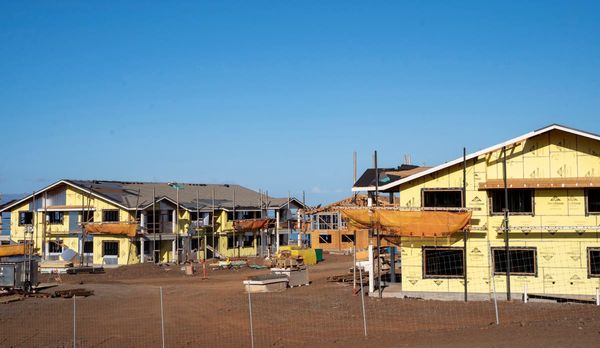
To fix or not to fix? That is the question many mortgage holders will be asking themselves amid the fastest run-up in interest rates since 1994.
The Reserve Bank earlier this month raised its key interest rate 25 basis points to 2.6%, its highest level in nine years. The consensus is that more rate hikes are all but certain.
However, with inflation still a threat at home and around the world, borrowers will be busy doing the sums: should I switch to a fixed rate if my loan is now at a variable one, to shield me from further increases?
Or if I’m on a fixed rate that’s about to expire, should I expose my finances to the whims of variability?
Market watchers, of course, don’t offer advice except that borrowers tailor choices to meet their individual needs. They do, though, discourage a “do-nothing” stance, as competition tends to reward agility and penalise inertia when it comes to repayments.
One thing is clear: borrowers now taking out new loans overwhelmingly opt for variable over fixed rates.
The ratio was close to 50:50 during the pandemic but the fixed-rate share of 4% is now the lowest in 14 years, RateCity, a data provider, said.
Variable-rate loans dominate the market, accounting for about 96% by value, or the highest proportion versus fixed-rate loans since late 2008. (Source: @RateCity, ABS) pic.twitter.com/t1JDRBgPGK
— Peter Hannam (@p_hannam) October 14, 2022
Sally Tindall, the head of research at RateCity, said the appeal of variability over fixed-rates for new loans was simply a numerical one.
“It’s really hard for people to sign up to a rate that starts with a ‘5’ or a ‘6’, even though when you do the maths, you know the logic tells you that their variable rate might get there,” Tindall said. By contrast, the lowest variable remains about 4%.
Tim Lawless, the head of research for CoreLogic, agrees, noting the current share of fixed-rate loans for new borrowings fell off a more normal level of about 15%.
“Fixed mortgage rates are substantially more expensive than variable rates, with a difference of approximately 50 basis points between the average three-year-or-less fixed rate compared with the average variable rate for owner occupiers,” he said.
A key reason for the flow back to variable-rate loans is that lenders have been offering lower interest rates than fixed ones for about the past year. (Source: @corelogicau ) pic.twitter.com/SOcQI6GKfy
— Peter Hannam (@p_hannam) October 14, 2022
“We are likely to see more borrowers choosing to fix their mortgage rates once fixed interest rates reduce to be closer or below the variable rate,” Lawless said.
Outcomes will hinge, though, on where interest rates go from here.
RateCity did some number crunching for Guardian Australia on refinancing a $500,000 loan to the lowest of each rate with a big four bank (average) compared with the lowest market rates overall. (Calculations include account switching costs, fees, cashbacks and cash rate changes.)
Taking Westpac’s forecast for the RBA’s cash rate to peak at 3.6% by next March before sinking back to 2.6% in 2024, the lowest two-year fixed loan comes out only a fraction ahead. That gap, though, is solely because that cheapest deal comes with a $2,000 cashback offer for loans up to half a million dollars.
“If you take out the cashback from the maths, the lowest variable works out better but by just a few dollars,” Tindall said.
Applying CBA’s more dovish view of the RBA’s future moves, the calculations shift.
The biggest issuer of mortgages in Australia correctly picked the RBA’s 25 basis point move this month to 2.6%, and it expects another such rate rise next month to a peak of 2.85%. The CBA predicts the next RBA moves after that will be cuts of a quarter percentage point in August and November 2023.
In the latter case, opting for the variable rate over fixed and snaring the lowest one translates into savings of more than $5,400, according to RateCity.
“The other thing that is clear is that people shouldn’t just ‘do nothing’,” Tindall said.
“It is the worst of the options presented using the Westpac forecasts,” she added. “However, with CBA’s forecasts, the big four banks’ average two-year fixed rate is worse than doing nothing.”
CoreLogic’s Lawless said variable rates at least help borrowers keep their options open. They may choose to refinance to a fixed rate “once there is more certainty about the level and timing of a peak in the tightening cycle”.
Adelaide Timbrell, a senior economist for ANZ, said borrowers were typically making calculations on the advertised rates rather than a studied assessment of future economic trends.
“The average borrower on housing in Australia is not necessarily making calls on what they expect interest rates to be in the future, rather they are choosing the cheapest current rate,” Timbrell said.
How the mortgage rates stack up from the big four banks for owner-occupiers paying principal and interest. (Source: @RateCity) pic.twitter.com/OzZ3njBMvN
— Peter Hannam (@p_hannam) October 14, 2022
Gareth Aird, CBA’s head of economics, said: “Most borrowers don’t want to lock in a fixed rate as the fixed rates are higher than the floating rate.
“I wouldn’t think about cuts at some point in the future as a sign of pessimism [about the economy],” he said. “Rather that, once inflation starts to come back to close to target, we don’t need a cash rate at such a restrictive setting.”
After all, the RBA’s cash rate was just 0.75% before the pandemic or much less than the current level and what appears be a “neutral rate” of about 1.5%, Aird said.
The lowest mortgage rates currently on the market, according to variable loans (left), and fixed-term ones. (Source: @RateCity.) pic.twitter.com/wcZYn9BPwa
— Peter Hannam (@p_hannam) October 14, 2022







